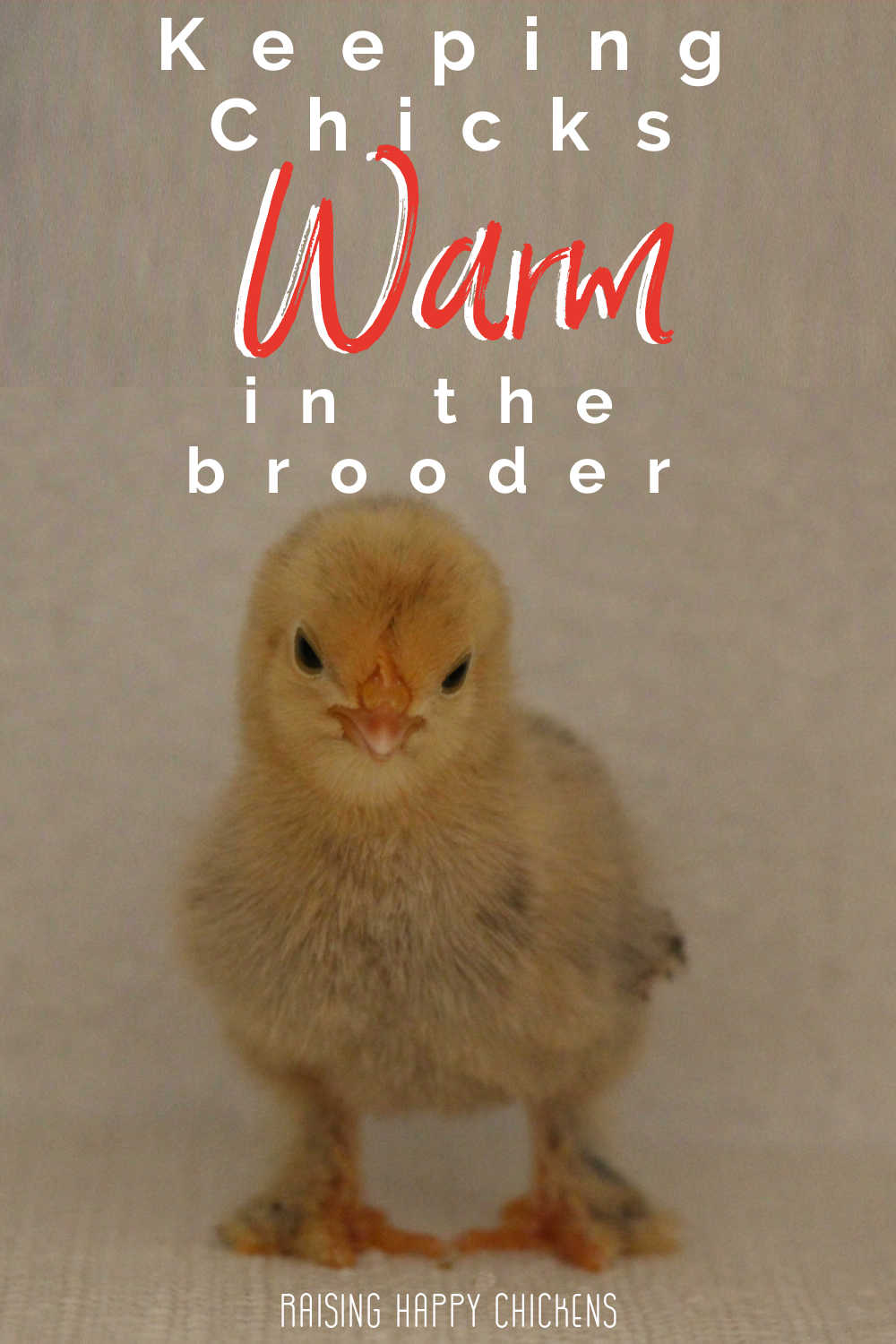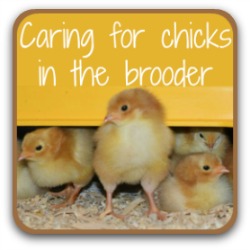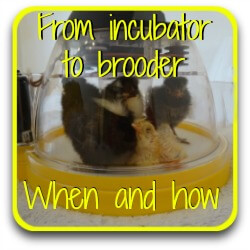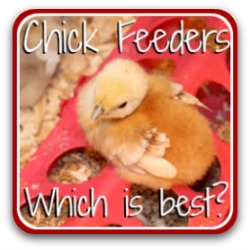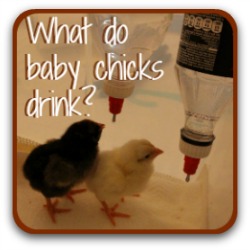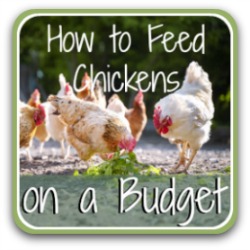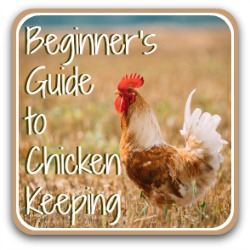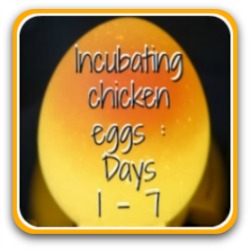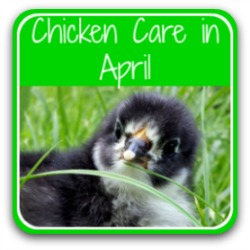- Home
- Chicks in the Brooder
- Temperature
Temperature for baby chicks: what should it be, for how long, and how can you sustain it?
Caring for baby chicks in the brooder? You need to keep them warm! Here's how.
Having a reliable heat lamp to maintain the right temperature is one of the most critical issues for keeping new chicks healthy.
Without it, they can very quickly become chilled, and die.
Why? Because the fluffy down a chick hatches with can't protect them against cold. Only when they're feathered, at about eleven weeks, will they be able to control their own temperature.
Until then, we need to play the part of mother hen and keep their temperature at the right level.
This article covers what the optimum temperatures are at critical points, what the options are for heating and how to tell whether your baby chicks are comfortable.
What's the ideal temperature for baby chicks?
You will need to keep a careful eye on the temperature in the brooder. Hatchlings move into it having spent at least a few hours drying out in a nice, hot incubator at around 99ºF / 37.5ºC.
There are generally agreed specific details for heat levels which should start at week 1. At that point, the temperature should be around 95ºF / 35ºC.
Here's what ideal brooder temperature for baby chicks look like.
Week
1
2
3
4
5
6+
Temperature ºF
95
90
85
80
75
70
Temperature ºC
35
33
30
27
24
21
Bear in mind, though, that brooder warmth will also be affected by the temperature of the room it's in and the number of hatchlings. The more chicks, the more they'll huddle together to keep each other warm.
So if, for example, you're brooding in the middle of a hot summer, you may not need a heat lamp in your brooder at all.
They must also be kept draught free. A brooder which has some warm spots but other places where wind is whistling through is going to cause serious problems for successfully raising baby chicks, whose temperature regulation is not developed enough to keep their body heat stable.
How to make sure it's the right temperature? One way is to use a digital thermometer such as those used in the terrarium. They're inexpensive and can be a life-saver, particularly if you don't have a radiant heat lamp.
One such as this is ideal.
Remember - your chicks are the experts in their temperature!
Thermometers and temperature grids are good, but the best indicators of whether they're warm enough are your babies themselves.
How? Simple. Watch their behaviour, listen to the noises they make.
- Are they spread out around the walls of your brooder, keeping well away from the heat lamp? Are they showing any indication of panting?
- In that case, they are likely to be too hot. Chicks who are too hot can develop problems including dehydration and pasty butt. Lower the temperature by making the heat lamp higher if you use one, or reducing the temperature in the room.
- Are they huddled together close to the heat source and peeping loudly? They're likely to be too cold. Baby chicks chill easily and can quickly die. Increase the heat in your brooder until they are more comfortable. This may also involve increasing the ambient temperature in the room.
- Chicks who are comfortably warm without being either hot or cold will go about their business eating, drinking and exploring, spread out around the brooder, peeping cheerfully but not distressed.
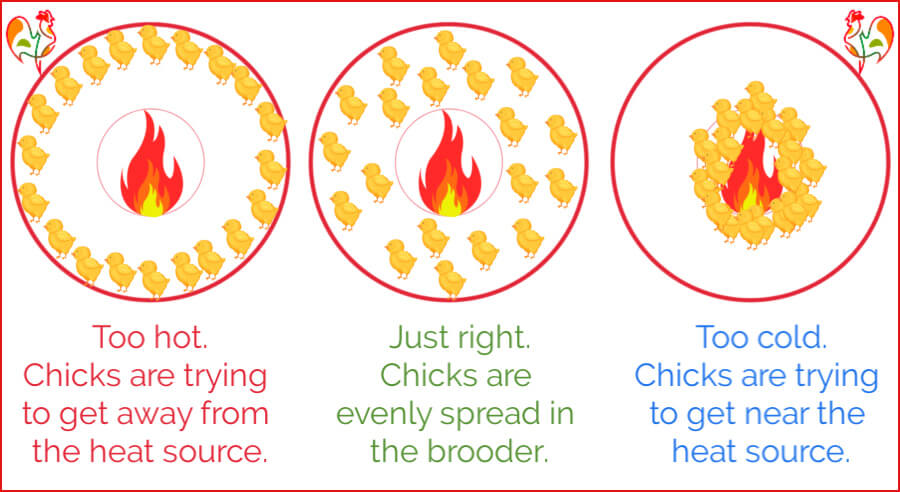
If you purchase a product through links on the rest of this page, I receive a small commission at no extra cost to you. I only recommend products I have purchased or would purchase myself and which I believe would benefit you. To learn more please see my disclosure policy.
Which kind of brooder heat lamp is best?
A heat lamp suspended above the brooder is what many people use. It's inexpensive and it works - to some extent.
An infra-red bulb is the more efficient than white, as it doesn't stop the chicks from sleeping, which white light does, and can help prevent pecking.
Alternatively, a lamp like this gives off no light at all. But it does get extremely hot to the touch, so be careful.
Warning: Many people use heat lamps successfully and without incident. However, many others don't.
Heat lamps plus flammable materials like cardboard boxes or wood shavings in brooders are potentially lethal. Even those who consider they have their heat lamps well secured have been startled to find they really weren't. Chicks can fly into them, or peck the wire until it gives way...
For that reason, I don't recommend using this type of heat lamp. I've seen too many disasters.
If you wish to use a traditional heat lamp, that's absolutely your choice. My recommendation would be to add a lamp guard like this one with either of the bulbs mentioned above.
Be very careful not to put your chicks at risk.
The benefits of the radiant brooder lamp.
For safety reasons I made a decision to use only a radiant heat source. For me, that means Brinsea's heat lamps - I have both the small and the large versions.
The small one (EcoGlow Safety 600, previously called the EcoGlow 20) I use in the first stage brooder. All the chicks I've ever hatched have always loved it.
I use the EcoGlow Safety 1200 (was the EcoGlow 50) when my little flock transfers to a larger brooder box. It is equally effective and it's very easy to adjust the height as the babies grow. Brinsea say this one can keep up to 35 newly hatched chicks warm – I'd say fewer.
A radiant heat lamp provides a source of comfort as well as warmth. The heat warms the chicks' bodies as they touch it and they have a safe place under which to shelter and sleep when life gets too stressful.
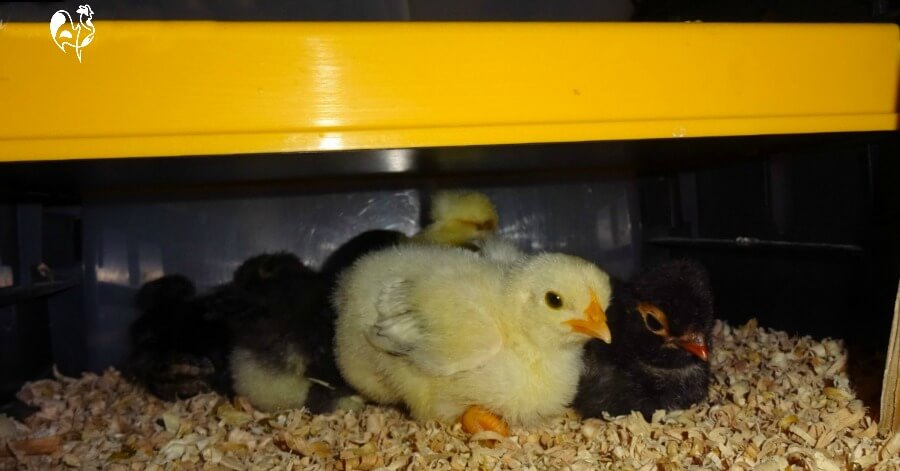 My 8 day old chicks underneath their Brinsea radiant heat lamp.
My 8 day old chicks underneath their Brinsea radiant heat lamp.There's no need to worry about the temperature under the EcoGlows: it's regulated for you. The chicks are warmed to exactly the right degree. All you have to remember is to raise the height as they grow.
With the small Brinsea heat lamp I raise it to a different level each week. Once they're too big to get underneath it I switch to the larger EcoGlow Safety 1200.
For more detailed information, see my honest review, here.
How long do chicks need extra heat for?
This depends on a few things :
- Where you live and the time of year you're brooding, which will dictate how hot or cold the general temperature is.
- The breed of chicken: some heavy breeds won't require heat for as long as smaller, bantam breeds.
- At what point your baby chicks have grown enough feathers (as opposed to the down they hatch with).
- So it's a matter for your judgement. Again, watch your chicks : as a 'rule of thumb' if they're spending most of their time away from their heat lamp, they're ready for it to be switched off.
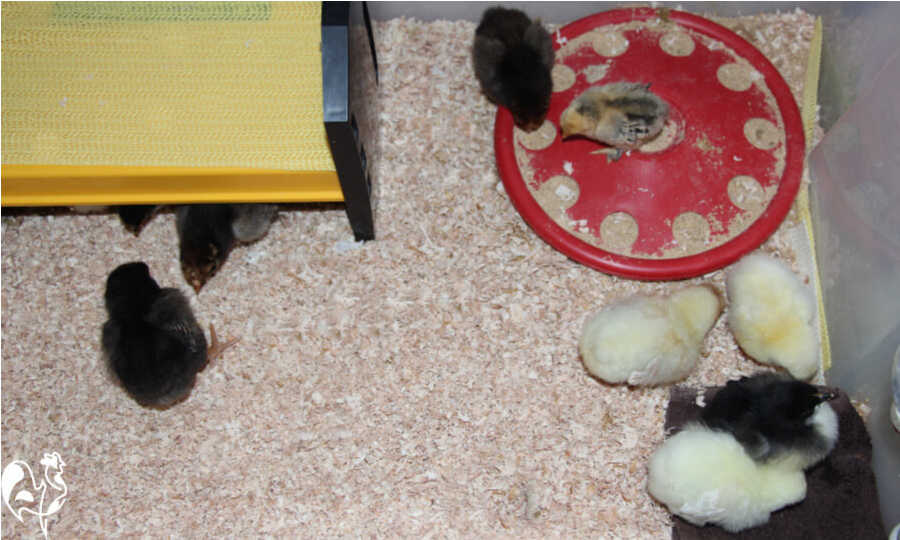 Chicks will move further away from the heat lamp when they're feeling comfortably warm.
Chicks will move further away from the heat lamp when they're feeling comfortably warm.How to measure temperature in the brooder.
It's important to understand that the temperature throughout the brooder needs to be consistently warm. Using the Brinsea EcoGlow Safety brooder lamps, the temperature in the room itself must be at least 50ºF (10ºC) - it's not powerful enough to sustain the right level of warmth if the ambient temperature is lower.
If you're worried about whether your brooder is warm enough, buy a couple of inexpensive thermometers and place them at different points in the container.
You'll then know for sure whether you need to raise or lower the temperature.
Terrarium thermometers like this one are ideal. The probe remains inside the container while the thermometer itself remains outside, making it impossible for chicks to peck at - and much easier to read.
And by all means use this week by week temperature guide, but remember to watch your baby chicks for the best clues about their comfort.
Is there something else about caring for baby chicks I can help you with?
These articles will give you an understanding of the needs of hatchlings in their first days and weeks out of the incubator - and beyond.
- Home
- Chicks in the Brooder
- Temperature
